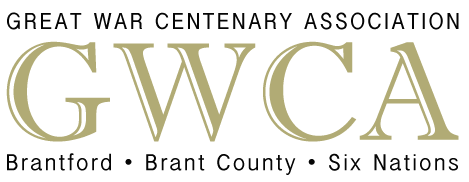BX March 30, 1915
Germans Were Aware When Canucks Arrived – Former Brantford Boy Says Their First Inquiry Was Regarding the Number – Describes the Rifle and Big Gun Fire of British Enemy
The Germans new quite well that the Canucks were in the trenches and at dusk some shouted out in English, “Canadians – how many?” writes Private Julius Klepper of Orillia, a former Brantford resident, from the front. Pte. J. Klepper, whose father was, it is reported an officer in the German army, was employed by Wiles & Quinlan of the “Big 22,” but before the war broke out went to Orillia, from which town he joined the First Contingent.
“The trenches of the opposing forces vary from 150 to 400 yards and we could plainly hear the Huns whistling and shouting across.
“Our experience started before reaching the trenches. For some distance before reaching the trenches the intervening road is commanded by the German trenches, which in some places are not more than 150 yards distant.
“It was bright moonlight, and I guess we were conspicuous. Anyway the rifles began to crack and the shells whined around very unpleasantly. However, none of our party was struck, although one of the platoons being relieved had one man shot coming out on the same road.
Know How to Shoot
“Sunday morning opened up rather misty, but at daybreak we were saluted by nice rifle fire. The Germans seem to cross fire. The right sniped continually all day, and the man who says they are bad rifle shots does not know what he is talking about. I can tell you they keep you with your head bobbing pretty quickly. There are not many wounded in this kind of trench, as all casualties, or almost all are shot through the head and a rifle bullet in the head generally means an all day job. One gets used to conditions very quickly and therefore one gets rather careless. I certainly got some close calls myself; if whisking past your ears and scraping the top of your cap can be called close. Anyway, I thought them plenty close enough.
Shelled a House
“In the afternoon some of our artillery and the German artillery exchanged compliments. The Germans fired shrapnel, evidently seeking the English guns and the English fired lyddite, which could be distinguished by the yellowish-green clouds of smoke which arouse before each explosion. A large house close to the rear of the German trenches was very soon put in a heap, and I guess if anything was in it, it would not amount to much after. You can hear the shells roaring through the air above your heads, and in a few seconds the roar of the explosion comes back to you. The whole thing was a novel experience and as a preparation I am inclined to think it quite an experience. In a few more days, after the other two brigades have completed their turn the whole division of Canadians is to take up its own section of trenches to defend.
“Of course, we do not know where these are situated, and if we did, would not be allowed to tell it. This whole country is infested with spies.”
